Silver en smoke cats
One question a cat owner often has is: what is the color of my cat? In this serie of articles about cat coats, we will answer this questions!
Note: Before reading this article, I recommend you read the first article in the series on solid cat colors, as some of the genetic explanations will be useful to understand this article.
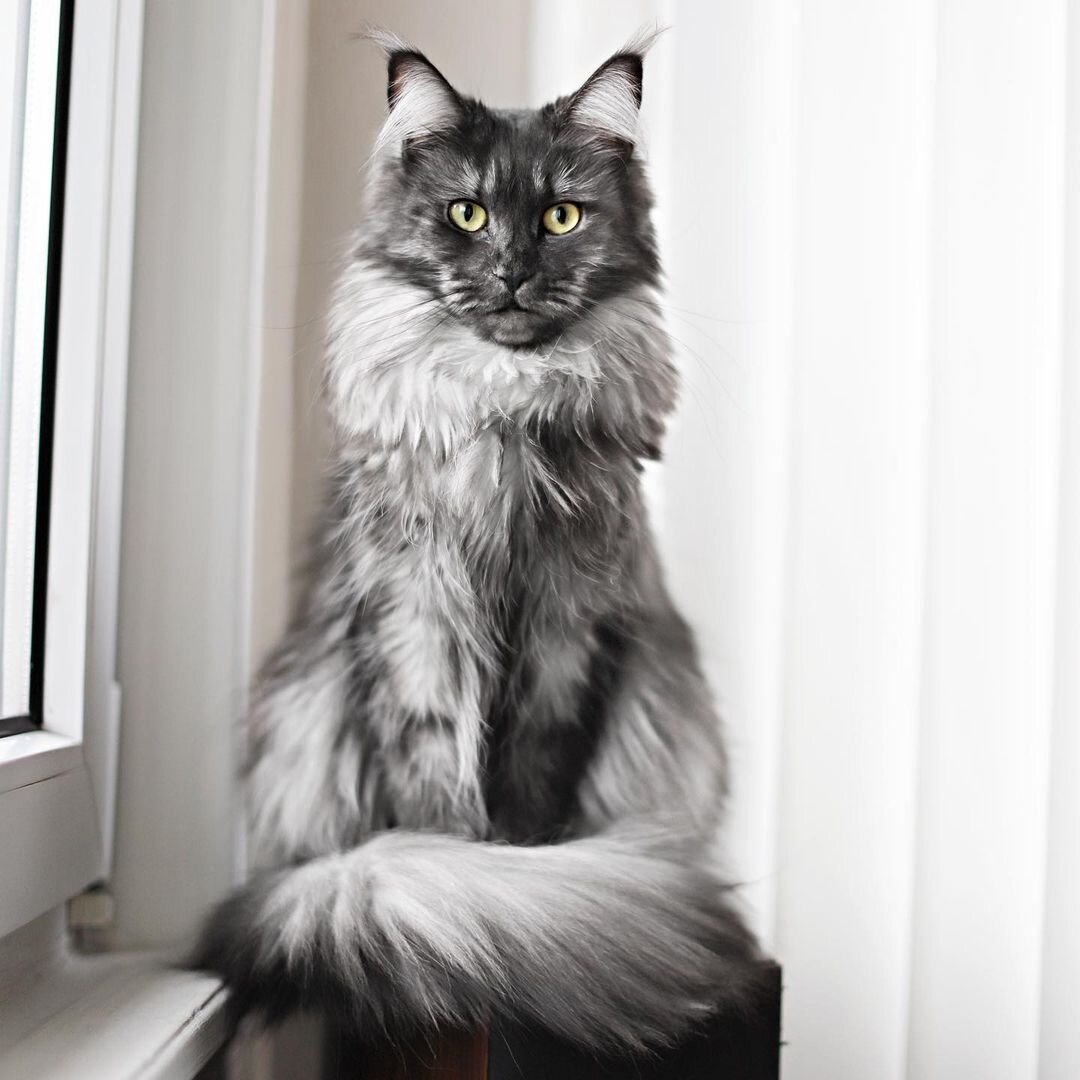
Black smoke cat from @nala_whitemainecoon
Smoke
A smoke cat, instead of having fully-colored hairs, only has the tips of its hairs which are colored, while the roots are white. When you part the fur of your cat, if the roots are bright white your cat is very probably smoke. The term smoke applies only to cats that are solid (not tabby). We will see in the next paragraphs what is the effect of the same gene on tabby cats.
The smoke effect is often more visible on longhair cats, mainly because their hairs are longer, so the white part is also more important. Smoke longhair cats often have almost entirely white fur in their mane or on other body parts where the fur is longer.
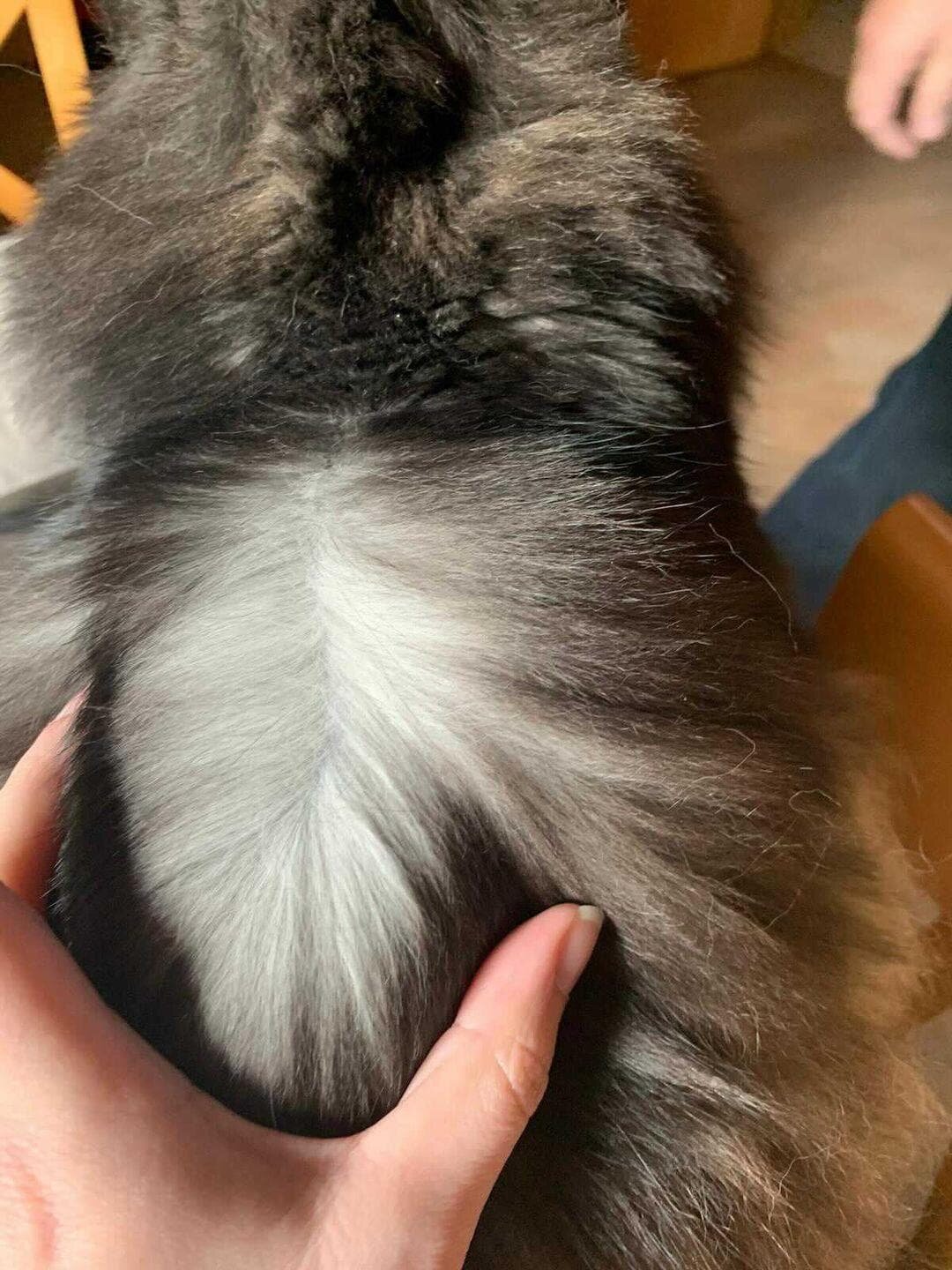
Roots of a black smoke cat from @an_unexpected_purrney
The face of a smoke cat often looks like if the cat has some white powder on it, which can give a shiny effect. Smoke can also make the overall coat color look paler and colder.
Smoke cats, and especially kittens, often have “phantom markings”, which let appear their underlying tabby pattern. You can find more details on this in the article about tabby cats.
The smoke effect (especially on shorthair cats) is sometimes almost invisible if the fur is not parted.
The same chocolate smoke cat, young and adult from @british.care.bears
Silver
The silver is the equivalent effect of smoke (same gene) but for tabby cats. If you remember the article about tabby cats, tabby cats have agouti hairs and fully colored hairs. An agouti hair is composed of several bands of colors: a dark one with the base color of the cat, alternated with lighter and more reddish ones.
The silver affects these agouti hairs: the bands of lighter and reddish colors are replaced by white. So, the agouti hairs of a silver cat are composed of bands of the base color of the cat and white bands.
Silver cats will have a very “cold” and “metallic” color, contrary to non-silver tabby. This is because the reddish part of the agouti hairs often has very “warm” colors.
Sometimes silver cats still have some yellowish hints, which are called rufism, and are caused by polygenes. This is mostly seen in domestic cats as purebred are generally selected to eliminate the rufism.

On the left, a solid hair and agouti hair from a non-silver tabby cat. On the right a solid hair and agouti hair from a silver tabby cat.
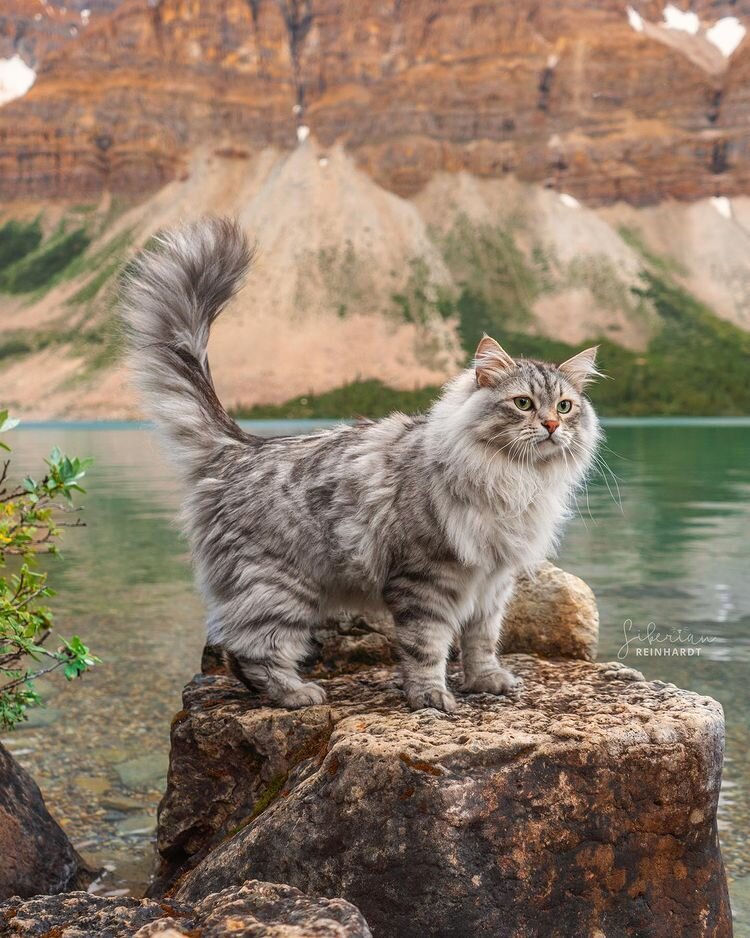
Black silver tabby from @siberian_reinhardt
An effect and not a color
Smoke or silver aren’t coat colors themselves, but they are additional coat effects. This means that they can be combined with other genes: a cat can be any of the base colors, tabby or not, tortie or not, it can have one of the point color patterns, have white or not. So, a cat can be blue smoke point and white or chocolate tortie silver tabby for example.
These effects are not enough to describe the coat of your cat. If you say that a cat is silver, for example, you are missing at least the base color information: is it black silver tabby or cinnamon silver tabby?
In colorpoint cats, both silver and smoke can be difficult to identify: generally, the mask of color on the face will be smaller and have a “blurry” border.
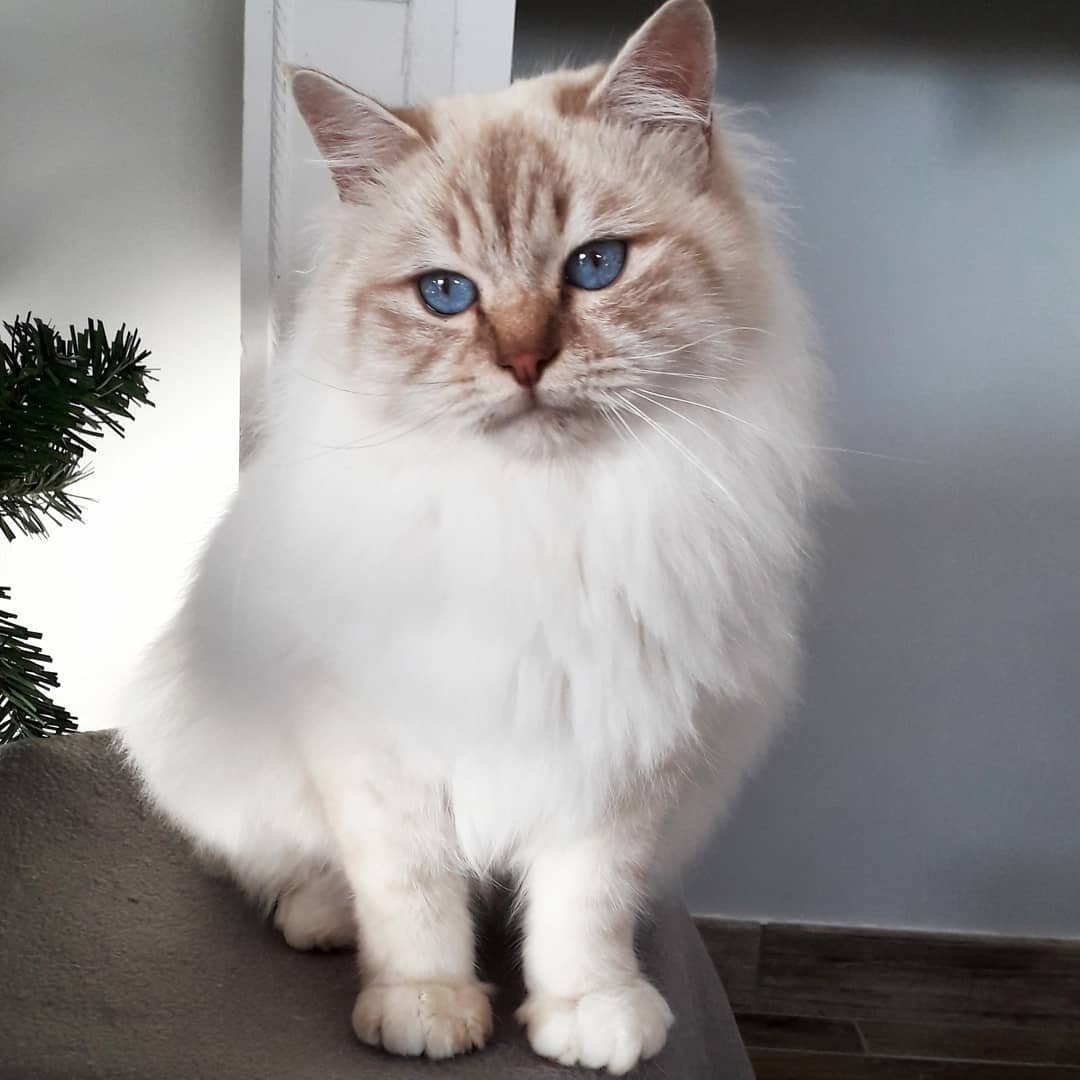
Cinnamon silver tabby point from the chatterie du monde de neige
Genetics
Smoke and silver are caused by the same gene, the inhibitor gene I. As its name indicates, this gene inhibits the production of pigment in the hair. In particular, it inhibits the pigments at the base of hairs for non-agouti cats, and for agouti cats it inhibits the production of red pigment.
The allele I for inhibitors is dominant to the allele i for non-inhibitor. So, if a cat is i/i, it is neither smoke nor silver. If a cat is I/i or I/I, it will be either silver or smoke.
So, a silver cat which is also agouti will be A/- I/- and a smoke cat will be a/a I/-.
It seems that when a cat is homozygous to the inhibitor gene (I/I), the smoke is more visible (high-grade) than a heterozygous smoke (I/i) (low-grade).
The gene for smoke and silver hasn’t been identified yet: it cannot, therefore, be genetically tested. For this reason, it’s impossible to be 100% sure that a cat is silver or smoke.

Seal (= black) smoke point from @koshcat, you can see the tabby phantom marking on the front
This article is the last one in the series of basic cat coat colors! Now that you know about the base color, tortie, tabby, point coloration, white spotting, and smoke/silver you can identify almost all cats. Almost, because there are a few coat effects left. In fact, those colors are mainly breed-specific and so are very uncommon to find in house cats. The next series will be about breed-specific cat coats, in which I will explore all the cat coats left!
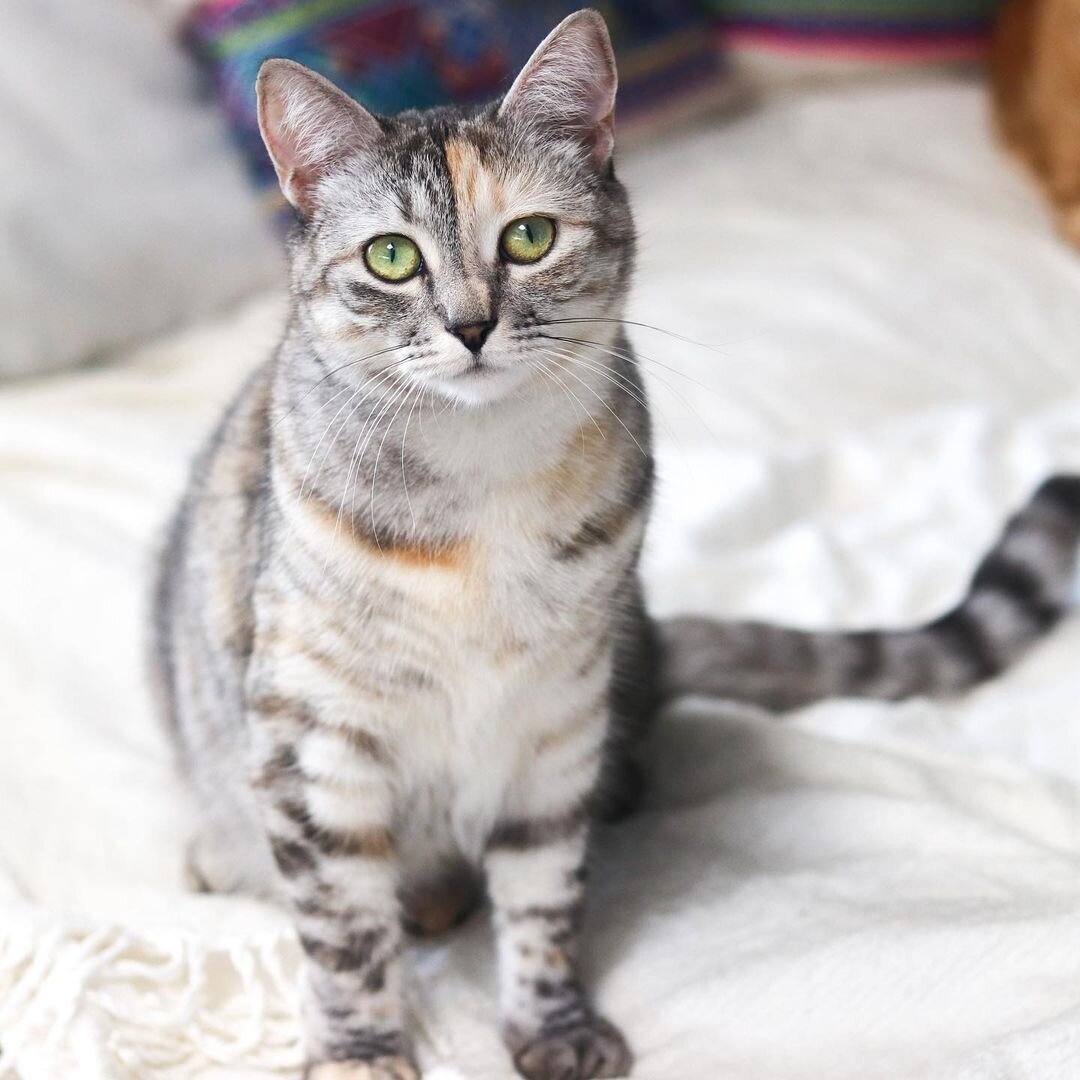
Black tortie silver tabby from @pizza_and_luna

